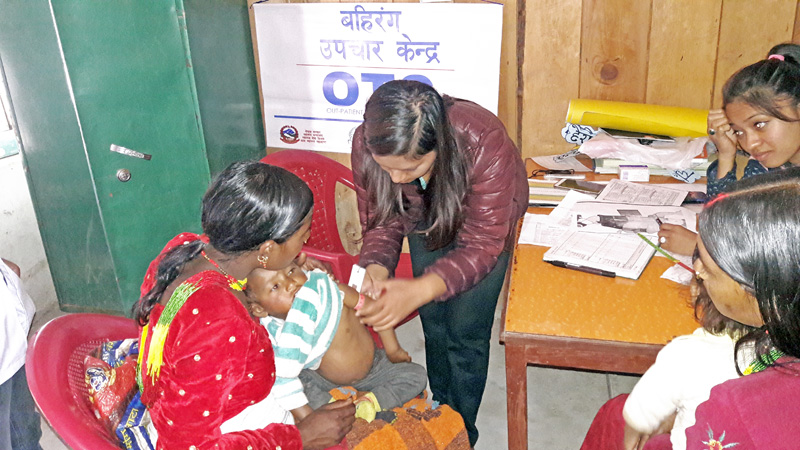Malnutrition increasing among children
Kathmandu, December 26
Malnutrition and food insecurity have become serious problems in the context of our country.
Newborns, children, adolescents, pregnant and breastfeeding mothers are at high risk of malnutrition and food insecurity.
In recent days, child mortality rate has decreased due to availability of health care and immunisation service in the country, but chances of malnutrition among children below five years are high compared to previous years throughout the country.
Every year, one out of 20 children die before they become one-year-old, while one out of 16 children die before are five years old due to malnutrition.
According to the data report of Nepal Public health survey, 2011, nearly 12 per cent of children are born with low weight in the country. Due to lack of nutrition during pregnancy, the baby born to such mothers are malnourished and that is a major cause of early death rate among children.
Similarly most adolescents of the country are suffering from malnutrition. During adolescence, children are at high risk of malnutrition due to their growth stage.
According to the report of Adolescent Nutrition Survey in Nepal, 71 per cent boys and 59 per cent girls were found to be malnourished. In the same way, there were no differences among adolescents of the city and rural areas in terms of malnutrition.
In the same way research findings show that malnutrition is higher in the Tarai region than hilly and mountain regions.
Dr Khem Bahadur Karki, executive director of Nepal Health research centre informed that those children who have green vegetables and fruits in their diet are less prone to malnutrition.
Most malnourished adolescents seem to have anaemia. Around 35 per cent of the total adolescents have anemia and nearly 27 per cent are boys and 42 per cent are girls.
Analysing the survey report, National Planning Commission planned the Nutrition Campaign in 2012 in coordination with the Ministry of Agriculture, Ministry of Health and Population, Ministry of Education, Ministry of Urban Development, Ministry of Federal Affairs and Local Development.
It has targeted 20 percent reduction in malnutrition among children and pregnant mothers.
The commission has been researching along with ‘Lokpal’ (mediator between local people and the government) to make the governmental program more effective.
Research has been conducted in Nawalparasi and Kapilvastu districts which show that Lokpal can be the best mediator who can help make the nutrition campaign a success.
According to Taranath Dahal, consultant of Freedom Forum, working to select Lokpal in the districts, most of the programmes organised by the government have not been so effective for children as well as pregnant women.
“Actual information and the training for maternity health and children nutrition were not available to the real victims and people in remote area. Similarly, to solve the problem of malnutrition, different ministries have to work together so that nutritious food can be availed from the best agricultural products.”
Ministry of Agriculture has provided different seeds and plants to the local people, but they do not have proper training and sufficient space to grow them.
That’s why the government should plan the geographical condition and status of people before organising such programmes, he suggested.






